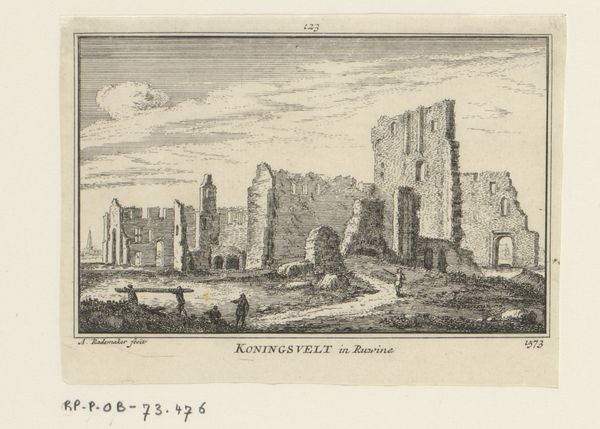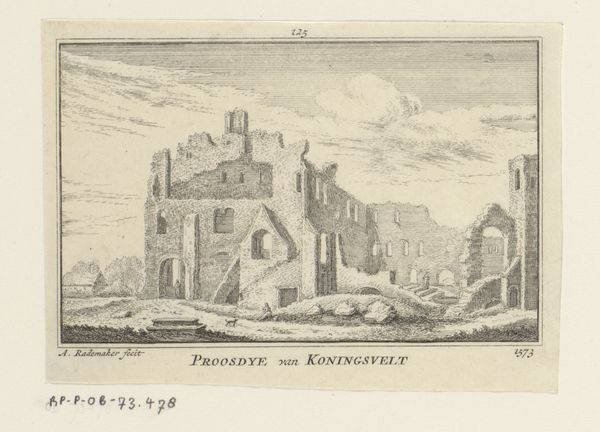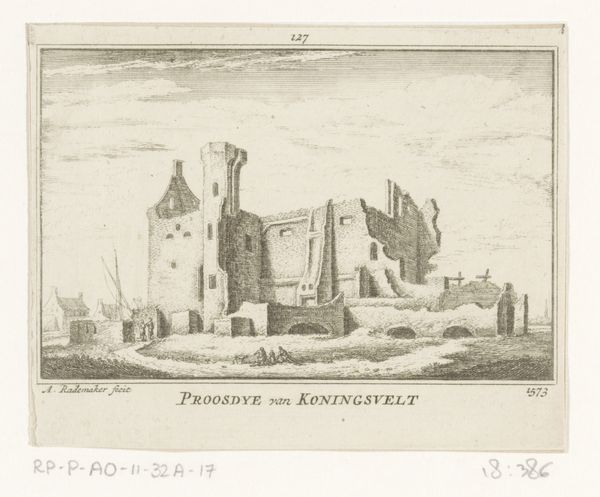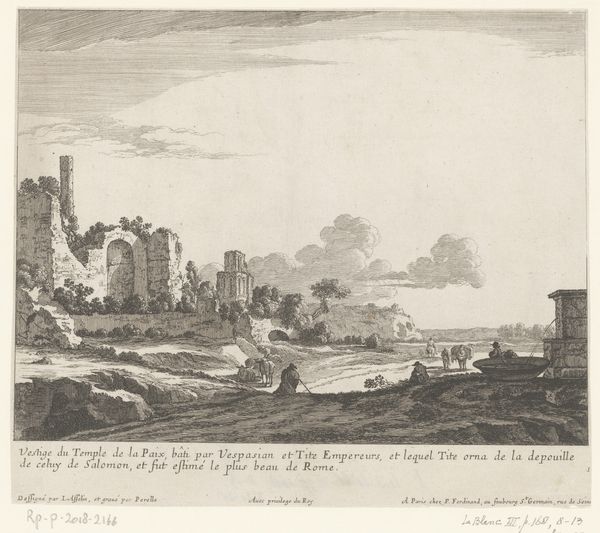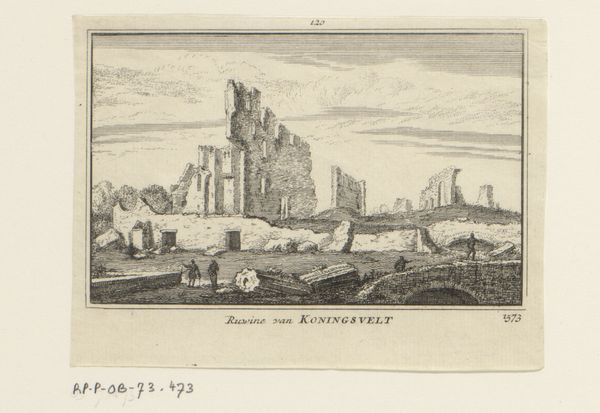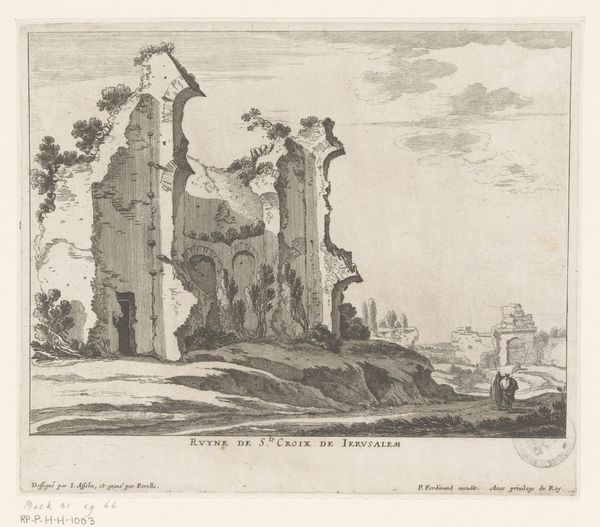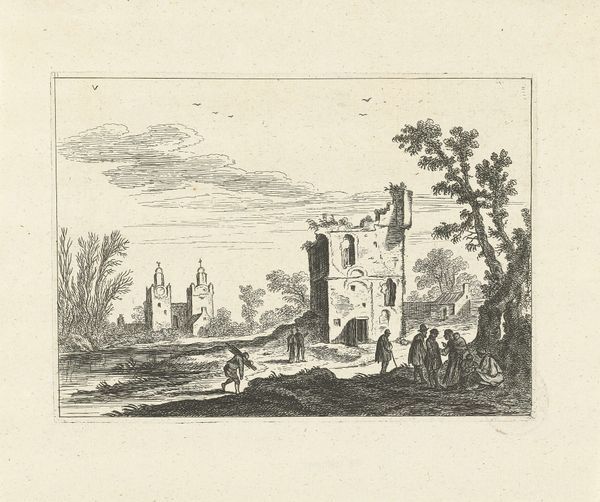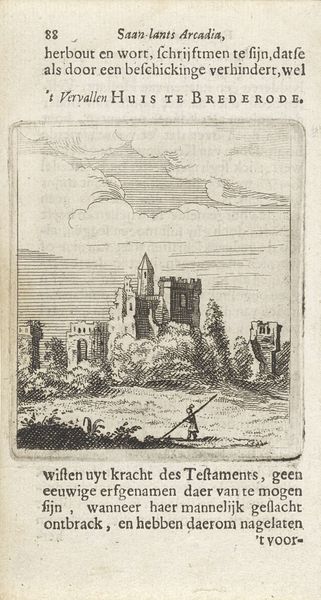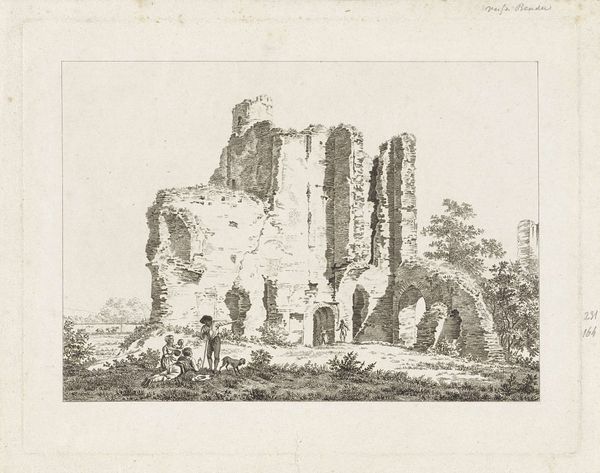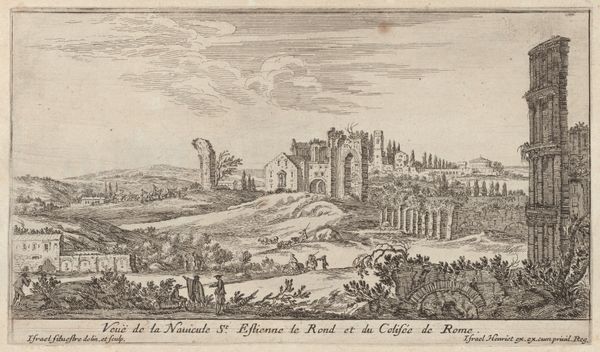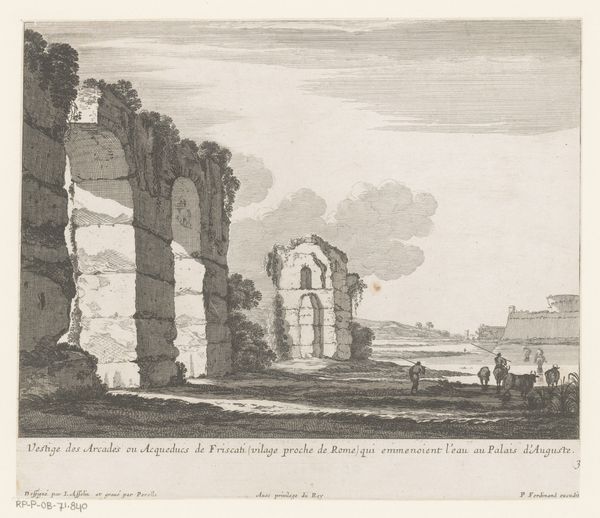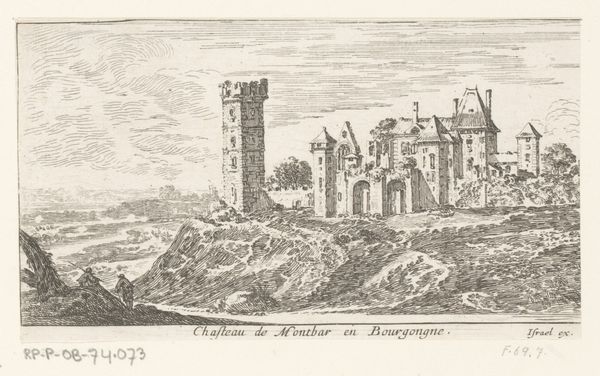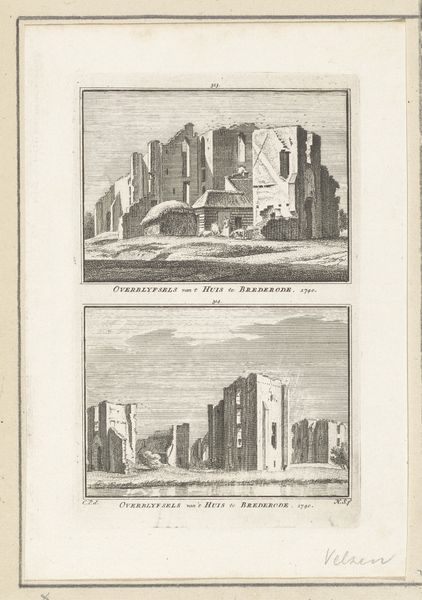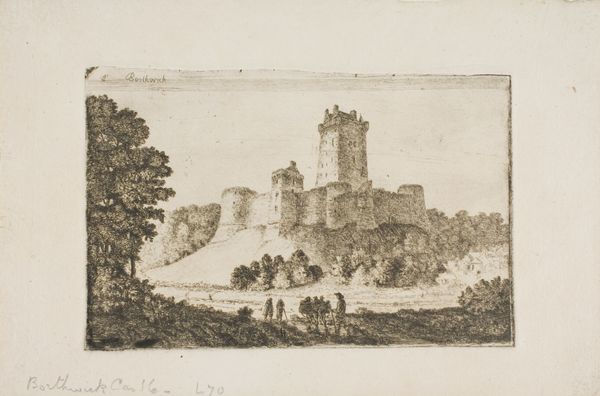
Gezicht op de geruïneerde proosdij van het klooster Koningsveld, 1573 1725 - 1803
0:00
0:00
abrahamrademaker
Rijksmuseum
drawing, print, etching, engraving
#
drawing
#
dutch-golden-age
# print
#
etching
#
landscape
#
engraving
#
realism
Dimensions: height 83 mm, width 109 mm
Copyright: Rijks Museum: Open Domain
Curator: Standing before us is "Gezicht op de geruïneerde proosdij van het klooster Koningsveld, 1573," a work attributed to Abraham Rademaker, dating from between 1725 and 1803. It's an etching and engraving, currently housed in the Rijksmuseum. Editor: It's wonderfully desolate, isn't it? The linear quality of the engraving emphasizes the ruined architecture against a vast, somewhat bleak sky. There's a stillness that I find captivating, despite the state of decay depicted. Curator: Rademaker, during the Dutch Golden Age, captured a sense of the past through decaying structures like this one. The ruins themselves become symbols of impermanence and change. Note how the sharp lines detailing the stone contrast with the softer shading that suggests the passing of time and the encroaching vegetation. Editor: Yes, the strategic deployment of light and shadow highlights the play of textures – the rough, crumbling stone versus the smoothness of the paper itself. There is an interesting dialogue between the linear elements defining the architectural shapes and the tonal gradations creating depth and atmosphere. Curator: Consider the inclusion of human figures. A tiny person and dog seem to walk within the ruins. They serve as a powerful reminder of life persisting amongst ruins. Ruins trigger a melancholic feeling, linking the transience of structures with that of human life. Editor: Precisely. Scale is important here too. These figures highlight the monumentality and historical weight of the ruin but, in a strange way, render the scale somewhat ambiguous, as if placing us within a dream-like reality. Curator: The decaying proosdij itself becomes an artifact bearing silent witness to past events and shifting societal forces. By studying such images, we uncover lost histories and imagine what once stood proud. Editor: Looking at this now, the controlled and structured linework conveys both the physical decay of the edifice and a certain permanence embedded within its rendering. The past persists materially in its structure, while Rademaker has ensured it is indelibly etched in time through this etching itself.
Comments
No comments
Be the first to comment and join the conversation on the ultimate creative platform.
